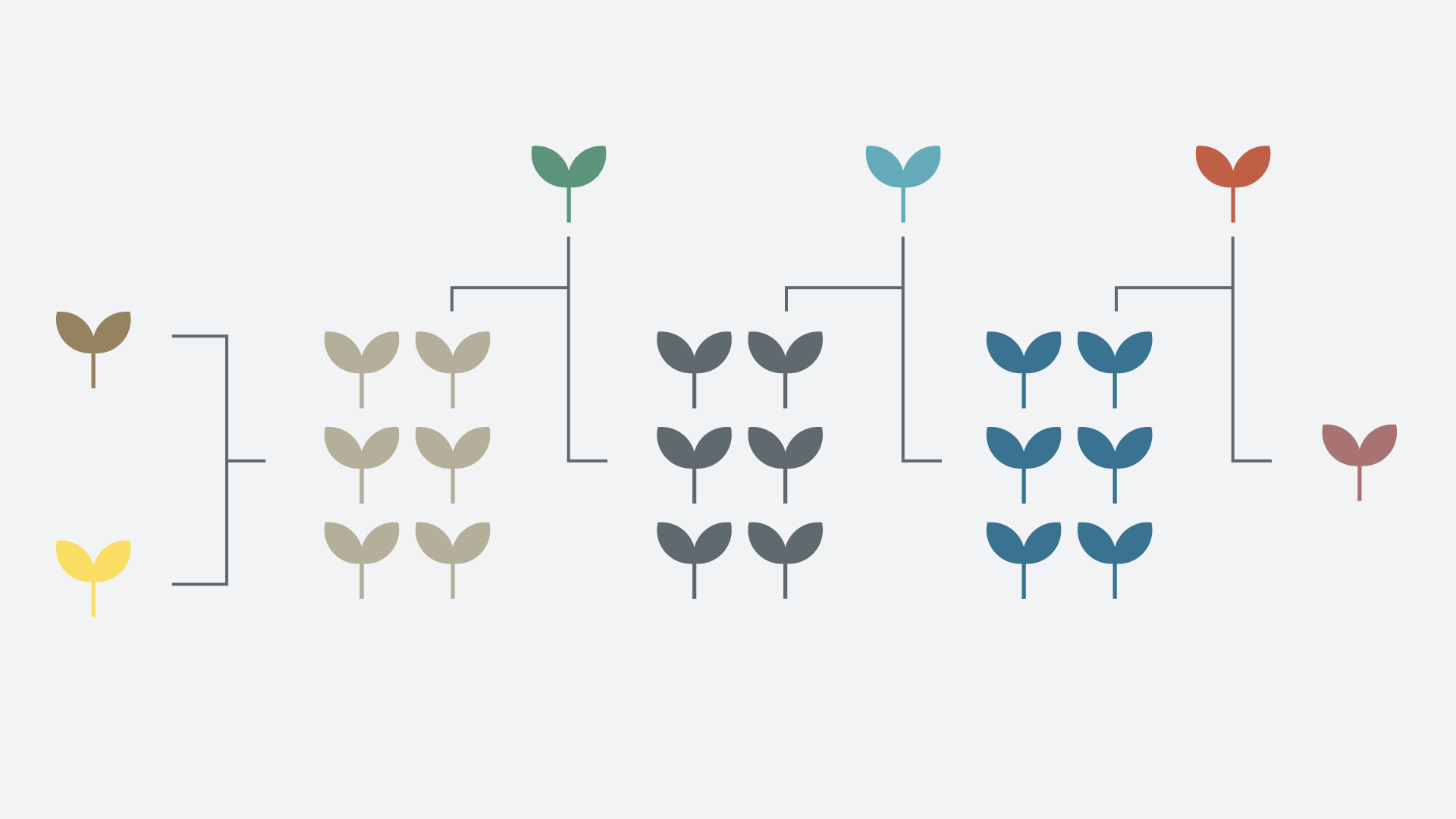Crossing and selection
Overview
In a nutshell
Parental plants bearing the desired characteristics are cross-bred with each other.
The grains of the largest and most productive plants are sown again.
Advantages
Original and fundamental type of plant breeding
Disadvantages
Requires a lot of time to achieve the desired result
Development
Selection since about 12,000 BC in modern-day Anatolia and the Zagros Mountains (modern-day Iran). Research on cross-breeding from about 1855 by Gregor Mendel (Mendel’s laws).
An overview of our breeding methods
Your contact



